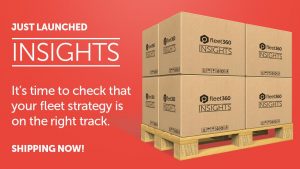If you manage a fleet of vehicles, then you know that it can be a real headache. There are so many different variables to keep track of, such as fuel consumption, driver behaviour, and vehicle maintenance. It can be overwhelming, to say the least. However, there is a solution that can make your life easier: fleet data analytics. In this article, we will explore the role of data analytics in fleet management and how it can benefit your business.
What is Fleet Data Analytics?
Before we dive into the benefits of fleet data analytics, let’s define what it is. Fleet data analytics is the process of collecting and analysing data from your fleet of vehicles to gain insights and make informed decisions. This includes everything from tracking fuel usage to monitoring driver behaviour.
The Role of Fleet Data Analytics in Fleet Management

Now that we know what fleet data analytics is let’s explore its role in fleet management.
Improved Fleet Efficiency
One of the main benefits of fleet data analytics is improved fleet efficiency. By tracking data such as fuel consumption and vehicle maintenance, you can identify inefficiencies and take steps to address them. For example, if you notice that one vehicle is consistently using more fuel than others, you can investigate the issue and make any necessary repairs. This can save you money in the long run and improve your bottom line.
Enhanced Driver Safety
Another important benefit is enhanced driver safety. By monitoring driver behaviour such as speeding or harsh braking, you can identify risky behaviour and take steps to correct it. This can lead to a safer driving environment for your drivers and reduce the risk of accidents on the road.
Increased Compliance
Fleet data analytics can also help you stay compliant with regulations and requirements. For example, if you operate in an industry that requires certain vehicle maintenance or inspections, you can use data analytics to ensure that your vehicles are up to date on these requirements. This can help you avoid fines and penalties for non-compliance.
Cost Savings
Ultimately, fleet data is key to uncovering potential cost savings for your business. By identifying inefficiencies, improving driver behaviour, and staying compliant, you can reduce your operating costs and improve your bottom line.
How to Embrace Fleet Data Analytics in Your Workflow
Now that you know the benefits of fleet data analytics, how can you embrace it in your workflow? Here are some steps to get started:
Identify Your Goals

The first step in embracing fleet data analytics is to identify your goals. What do you hope to achieve by implementing this across your local or global data sets? Do you want to improve fuel efficiency, enhance driver safety, or reduce operating costs? Once you have identified your goals, you can start to collect data and analyse it to achieve those goals.
Collect Data
The next step is to collect data from your fleet of vehicles. This can include everything from fuel consumption to driver behaviour. There are many different tools available to help you collect and analyse this data, such as GPS tracking and telematics devices. However, basic data such as GHG data (Co2-emissions), fuel consumption is also incredibly useful to check your OEM and LeaseCo strategy and compliance for example.
Analyse Your Data
Once you have collected your data, it’s time to analyze it. Look for trends and patterns in the data that can help you identify inefficiencies or areas for improvement. This can be done using software tools or by hiring a data analyst.
Take Action
Finally, take action based on your data analysis. If you identify an area for improvement, take steps to address it. For example, if you notice that one driver is consistently speeding, you can talk to them about safe driving practices and provide additional training if necessary.
Conclusion
Fleet data analytics is a powerful tool for fleet management. It can help you improve efficiency, enhance driver safety, increase compliance, and save money. By identifying your goals, collecting and analysing data, and taking action based on your analysis, you can make informed decisions and optimize your fleet operations. Remember that data analytics is an ongoing process, so it’s important to continually collect and analyse data to stay ahead of any issues or inefficiencies.
When it comes to implementing fleet data analytics, it’s important to choose the right tools and resources to help you collect and analyze your data effectively. There are many different software solutions and service providers available, so it’s important to do your research and choose the best option for your business.
In addition to choosing the right tools and resources, it’s important to have buy-in from your team. Make sure that everyone understands the benefits of data analytics and how it can help your business. Provide training and support to ensure that everyone is comfortable using the tools and resources you choose.
In conclusion, fleet data analysis can be a game-changer for your business. By embracing data analytics, you can gain insights, make informed decisions, and optimize your fleet operations. Remember to identify your goals, collect and analyse your data, and take action based on your analysis. With the right tools, resources, and team buy-in, you can take your fleet management to the next level.
Take a look at a quick overview of our Insights demo and get in touch if you would like to discuss this further.



